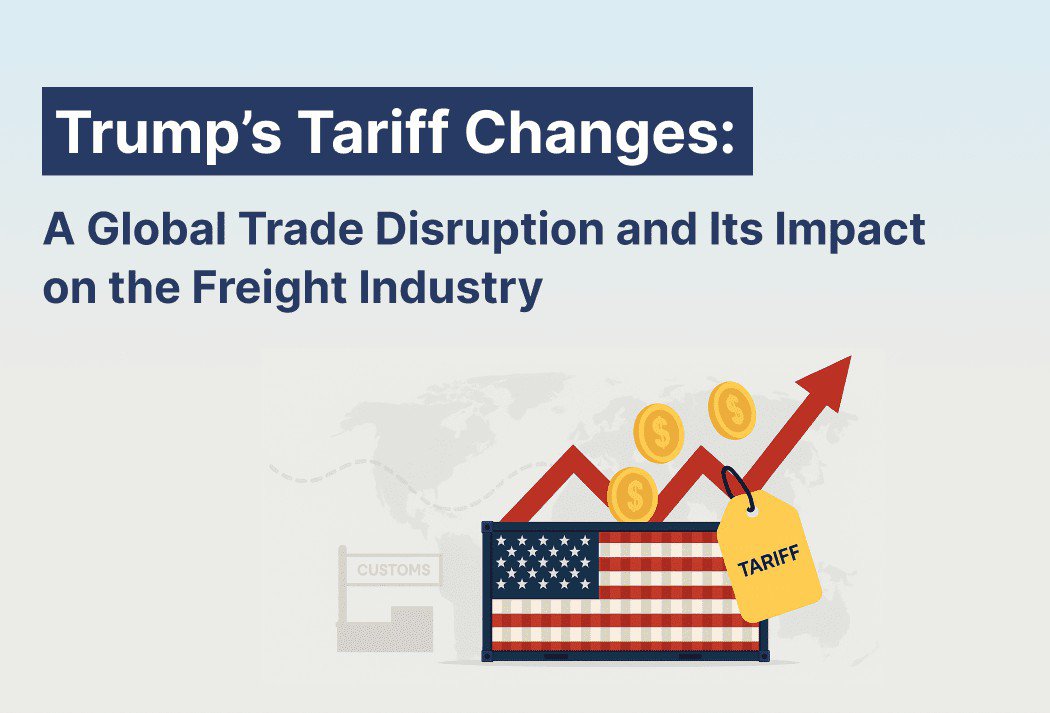
In a bold move that has sent shockwaves through global markets, former U.S. President Donald Trump has announced sweeping tariff changes aimed at reshaping the country’s trade relationships. These tariffs include a 10% global baseline tariff on all imports, alongside higher levies on nations with substantial trade surpluses with the U.S., including China, Japan, the European Union, Canada, and Mexico. While the administration argues these measures will protect domestic industries, critics warn of economic turbulence, supply chain disruptions, and rising costs for businesses and consumers alike.
Economic Implications
Trump’s tariffs have already led to significant economic ripples. Financial markets reacted swiftly, with major indices such as the S&P 500 and Nasdaq experiencing sharp declines. Investors fear the tariffs could dampen economic growth and corporate profits. Additionally, JPMorgan analysts have raised the probability of a global recession to 60%, citing these trade restrictions as a major economic shock.
The Organisation for Economic Co-operation and Development (OECD) has also warned that higher import costs will further fuel inflation, impacting the prices of consumer goods, from electronics to automobiles. With businesses expected to pass on these rising costs to consumers, everyday goods may become significantly more expensive. Small businesses, in particular, are at risk, as many rely on low-cost imports. Higher tariffs could push them into financial distress, leading to layoffs or even closures.
Other key economic concerns include:
- Retailers and manufacturers will transfer their increased imported cost expenses to consumers by elevating prices of everyday products.
- Companies will find new suppliers or relocate their operations to different countries which will lead to higher operational expenses.
- Foreign goods-dependent industries face employee reductions because businesses face rising costs that create employment difficulties.
Impact on India: Tariff Challenges and Opportunities
A recent analysis highlights how India is affected by Trump’s tariff changes. The U.S. has imposed a 26% tariff on Indian imports, in addition to a 10% global baseline tariff and a 25% tariff on automobiles. This policy shift presents both challenges and opportunities for India’s economy.
Key Tariff Changes for India
| Tariff Changes (April 2, 2025) | Impact |
| 26% tariff on Indian imports to the U.S | Higher costs for Indian exporters |
| 10% baseline tariff on all imports globally | General trade slowdown |
| 25% tariff on automobiles | Automotive sector faces pressure |
Economic Impact on India
| Economic Factor | Status |
| GDP Growth | 6.5% (Stable) |
| Inflation | 3.6% (Under control) |
| Expected Export Dip | 3–3.5% (~$7B loss) |
Sectors Most Affected
The sectors most affected by the new tariffs include pharmaceuticals, gems & jewelry, textiles & apparel, and auto components & chemicals. These industries rely heavily on exports to the U.S., and the increased costs could lead to reduced competitiveness in the global market. Indian exporters in these sectors may need to explore alternative markets or shift their strategies to mitigate the impact of rising tariffs.
India’s Response Strategy
- Diversifying trade ties – Strengthening partnerships with Europe, the Middle East, and Africa.
- Boosting domestic demand – Encouraging local consumption to offset export losses.
- Enhancing logistics and manufacturing – Improving supply chains under the ‘Make in India’ initiative.
China’s export tariffs have risen to 34%, giving India a potential competitive edge in global markets. While India faces hurdles, it could capitalize on these disruptions to capture new trade opportunities.
Impact on the Freight Industry
The logistics and freight industry will bear the brunt of these tariffs. Similar to the 2018 U.S.-China trade war, ocean freight rates are expected to surge by up to 70% as companies rush to import goods before the tariffs take effect. Increased shipments ahead of the new tariffs may also cause major delays at key ports, exacerbating supply chain inefficiencies.
Many businesses are now exploring alternative manufacturing hubs, such as Vietnam and India, to bypass tariffs, leading to shifts in global shipping routes. Companies may stockpile goods to mitigate tariff impacts, increasing demand for warehousing space and raising storage costs.
Other critical freight-related concerns include:
- Port Congestion – A surge in imports before tariffs take effect could result in significant shipping delays.
- The higher need for storage facilities will create rental price increases that affect business operations.
- Businesses must redesign their logistics systems because they need to minimize expenses generated by tariffs.
International Reactions and Trade Relations
Trump's tariff policies have generated international fear along with potential countermeasures from various nations. The World Trade Organization (WTO) predicts that these new tariffs could trigger a worldwide trade decrease which might lead to complete trade warfare. The affected countries including China, Mexico and members of the European Union have started showing their readiness to retaliate through trade measures.
The Mexican government declared that these tariffs will destroy more than 400,000 U.S. jobs while making veiled threats against retaliatory actions. The European Union together with China has shown readiness to impose counter-tariffs that could intensify existing trade tensions. The United States' international partners Canada, South Korea and Japan now review their trade agreements by seeking alternative economic partners to decrease their dependence on the U.S.
Conclusion
Trump’s latest tariff measures mark a pivotal shift in U.S. trade policy with far-reaching consequences. While they aim to bolster domestic manufacturing and reduce foreign reliance, the immediate effects include economic instability, higher consumer costs, and significant disruptions in the freight industry. As the global trade landscape adjusts, businesses must navigate these changes strategically to mitigate financial risks and maintain supply chain efficiency.
The coming months will be crucial in determining whether these tariffs achieve their intended goals or trigger a prolonged economic downturn. Either way, the freight industry must brace for heightened volatility in the wake of these trade disruptions.





 Get instant quote
and compare offers in real time
Get instant quote
and compare offers in real time